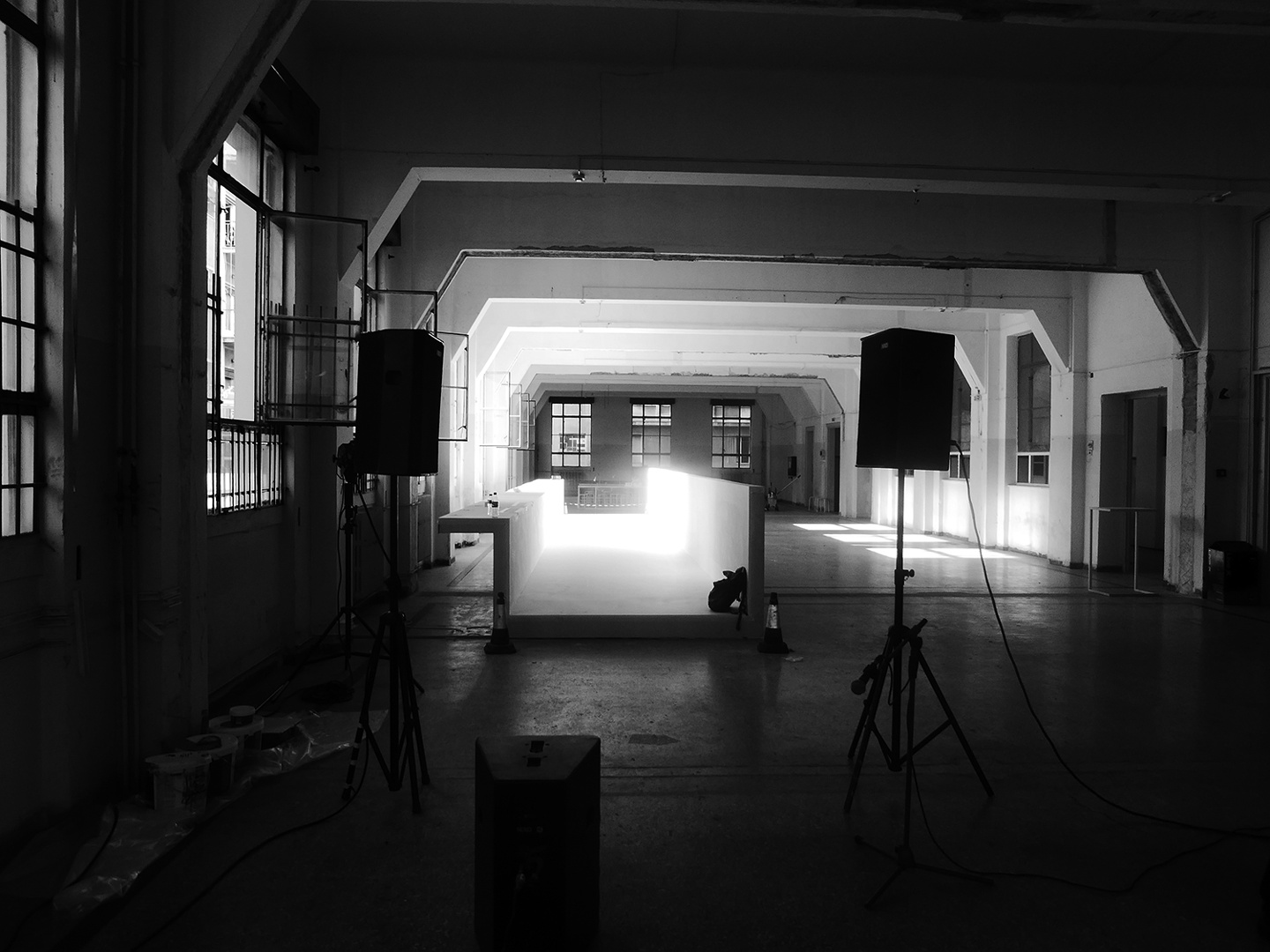The day the EU agreed to a third Greek bailout, July 12, 2015, was the same day that Aristide Antonas chose to photograph Die Welt’s headquarters methodically lowering scaffolds to wash their high-rise glass-curtain wall. But then cities are always acting out—a cliché, an old joke, a wink, a tip of the hat, an embrace, a knife in the back.
While many are completely oblivious to all this activity, however antic or subtle, Antonas’s work is mostly about its gentle orchestration. Born in Athens in 1963, he is among those urbanists who do not offer solutions and master plans but rather protocols—loose instructions for sequences, routines, or relationships that unfold in space over time.
Something like theatrical scripts, the protocols are deliberately authored in a way that relinquishes authorship to others. The best scripts offer not overbearing stage directions but a text that is really only a trace of, or a clue to, the action that the performer chooses to play. That action is meant to be the real carrier of information that may even overwhelm the text. Antonas designs a few details, critical dimensions, or settings that are suggestive of activities. Then, like a good playwright, he leaves the performance to the city itself.
Many much more violent codes and instructions also pass through a city. Some are designed to generate disenfranchising loopholes that deliver the control of space to private power. Some are bureaucratic habits of unimaginative government that mistakenly value a deadening balance and consensus over a generative imbalance and dissensus. Some are just buckshot detonated remotely as well as locally. Many of the vacancies in Athens that Antonas contemplates are symptoms of these codes and dogmas.
Architecture culture has sometimes regarded the activism of the urban protocols to be too marginal or temporary—the compensatory weak activity of the powerless. But what if the dispositions suggested by these protocols, like the disposition of their designer, are more powerful by being less insistent? The components of Antonas’s designs are often ephemeral. They are indeterminate for being both more practical and more politically vigilant. As timed-release forms of an urban practice, they potentially have a longer presence in the city, remaining in place to respond to the moment when they are outmaneuvered. But then maybe the urban chorus that is most difficult to target has always been both more resilient and more precise.
—Keller Easterling


.jpg,846)
